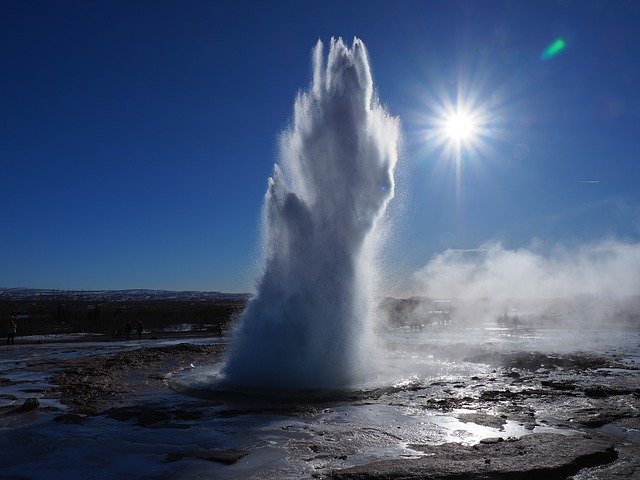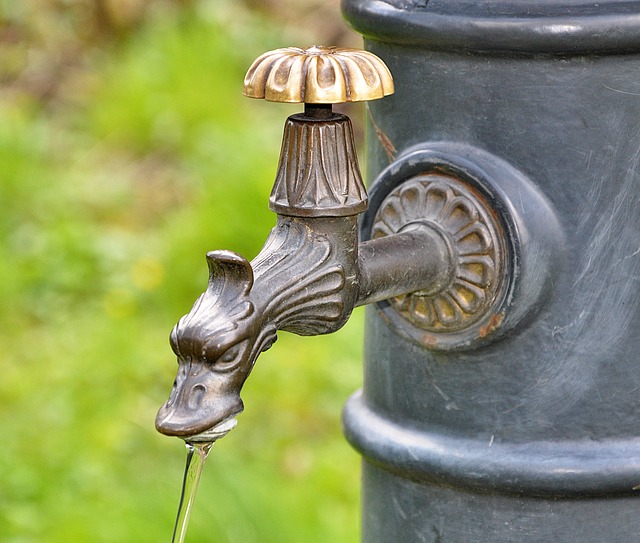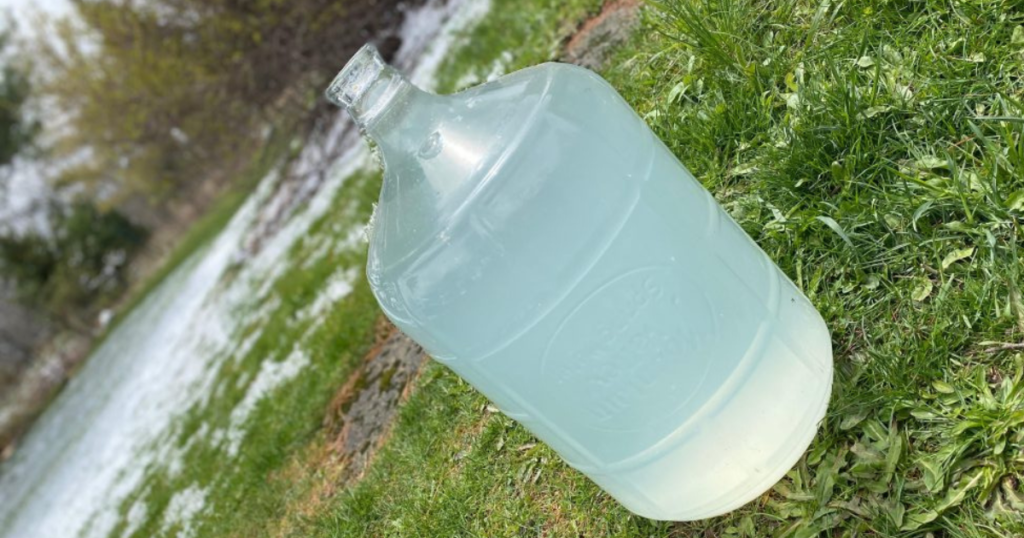Dihydrogenmonoxide, H20, water – an element central to life.
It covers 74% of the earth’s surface.
Furthermore, according to H.H. Mitchell, Journal of Biological Chemistry 158, the brain and heart are composed of 73% water, and the lungs are about 83% water.
The skin contains 64% water, muscles and kidneys are 79%, and bones 31%.
But is all water created equal?
In this article you will learn about the benefits of drinking real spring water!
We all drink water daily, some of us more than others.
Hydration is essential to optimal health, but we don’t often ask – where does the water we drink come from?
What is the best type of water to drink?
Does it matter?
What is in your tap water?
Spring Water vs. Municipal Water

For most of human history, our species acquired water from aquifers that released mature water to earth’s surface.
Also known as Springs.
Much of the water from aquifers feeds lakes, rivers, and streams.
Humans eventually figured out how to tap into these aquifers to gather the water before it bubbled up to the surface organically.
This is what we now call a “Well” today.
Of course, many large cities are unable to source all of their water from wells due to obvious population concerns.
However, the municipal system has taken advantage of large bodies of water and transported the water via piping systems into the urban centers.
Where Does Municipal Water Come From?

New York City for example, obtains its water from the Catskill/Delaware watershed, about 125 miles north of NYC.
The other 10 percent comes from the Croton watershed.
The watershed resides on over a million acres, both publicly and privately owned.
This water passes through the world’s largest ultraviolet disinfection facility in Westchester County.
Ultraviolet radiation is used to kill micro-organisms in the water and then it gets a cocktail of chlorine, phosphoric acid and sodium hydroxide to disinfect it and raise the pH levels to prevent pipes from corroding and releasing harmful heavy metals.
Additionally, fluoride is added at a concentration of one part per million to help prevent tooth decay and has been added since 1964 in accordance with the New York City Health Code.
Is Municipal Water Safe to Drink?
Despite the relative safety of drinking municipal water, I choose not to drink the water and instead get my water directly from a spring in upstate New York.
Without getting into a winded discussion on the possible health concerns of disinfectants added to municipal city water, it is worth noting the reality that they are present.
Despite what the regulatory agencies have deemed as safe practices for added chemicals, I choose to skip the middle-man and go straight to the source.
The source that we all once had connections with – pure clean unadulterated spring water.
I’m not sure about you, but I personally don’t like the taste of chlorine in my water and if you have ever tried ice cold water straight from a spring – there is no comparison.
Is Spring Water More Safe to Drink?
Since aquifers reside well below the earth’s surface, pollutants are less likely to contaminate the source.
This cannot be said of municipal water sourcing as the large bodies of water which feed these water lines are often victim to contamination.
Of course, springs can at times house contaminants from bacteria if an animal dies upstream from where you are gathering the water for example.
However, this is unlikely and you could always examine the area to ensure that it appears clean without any obvious signs of contamination.
Even common sense will tell you that water which comes from hundreds of feet below ground, will be cleaner than that of surface sourced water.
Where to Gather Spring Water

The coolest resource I have come across as a quick way to finding local springs near you is findaspring.
This database will point you to the nearest spring in your locale.
You would be surprised that even in urban centers, there are usually springs within a short drive.
You can also go to a library or historical society and inquire about the local springs in the area.
Oftentimes, the old timers will know exactly where the springs are as gathering this type of water straight from the source was much more common years ago.
The Best Spring Water
Now I realize that for many, it is not possible to gather water directly from a spring source due to travel constraints, lack of convenience etc.
However, there are companies that deliver spring water to urban dwellers.
I have used several of these delivery services myself and have sourced the water directly from small distributors that hold ethical harvesting practices.
Now of course there are the well-known companies such as Poland Spring (owned by Nestle) which also deliver spring water.
However, their practices are questionable and exploitative of not only the natural resource itself but also the communities in which this elemental gold resides.
Often these companies just use municipal water and use ambiguous labeling to mislead consumers into believing their water is in fact from an aquifer, a spring.
The company that I used to order from when I lived in New York City is called Mountan Valley Spring Water which you can check out here.
Of course, the choice is yours and there certainly is a price point difference.
When it comes to my body – I am willing to go above and beyond to ensure that the majority of my drinking water is sourced ethically and sustainably.
What is The Healthiest Water to Drink?
I’m not here to open a formal scientific debate about the differences of drinking municipal water vs spring water.
The chemists will tell me that it is all H2O at the end of the day and there is zero clinical evidence to suggest spring water reigns superior.
I am simply writing this because I believe it makes a substantial difference in my health and the way I feel.
The taste difference is undeniable to anyone who has ever experienced unadulterated spring water.
Furthermore, the experience of actually gathering your own water puts you in direct participation with the natural landscape which ultimately has immense health and mental health benefits.
I would go as far as to argue that if we can get more people involved with where their food and water comes from by participating in the process – we could actually make a global impact on the environmental crisis we face today.
Try it yourself if you don’t believe me.
With a connection to my daily drinking water, I feel much more appreciative of the elemental gold that we often take for granted as the sink endlessly runs.
Take a moment to consider where your drinking water comes from. Then you can make the choice yourself of where you get it from.
I would urge anyone considering to make the switch to plunge right in, you’ll never look back.
What’s Next?
If you are interested in learning more about health, nutrition, and fitness – I publish weekly articles that you can access here.
Who is Jakob Roze?
Jakob Roze is a Strength and Conditioning Coach and founder of RozeFit. His practice centers around empathic communication and relationship building. With an emphasis on pain free, functional movement patterns and strength training, Jakob Roze assesses each individual’s needs and prescribes exercise modalities appropriately in order to facilitate long term gains in strength and health. He draws from evidence based approaches and applies the knowledge in a personalized fashion to facilitate body and lifestyle transformation amongst his clients.


